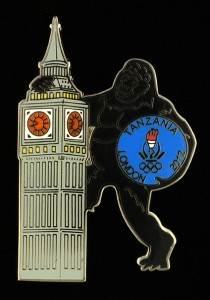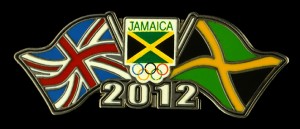In the last two posts, we’ve covered two types of unauthorized pins that are quite clear; counterfeits because they can be compared with an original authentic NOC pin and outlaw pins where the producer has no relationship with the NOC in question. In both cases, the perpetrator is out to personally benefit, either by trading the pin for an authorized one or by selling it to the unsuspecting. Today, we are going to discuss another category where things are much less clear: renegade NOC pins.
The definition of renegade that we are using here is someone who rejects his cause or faith for another. In the context of NOC pins, a renegade pin is one that is produced by someone who is at least loosely affiliated with the NOC in question, but is not authorized to produce pins for the NOC. This description already indicates some of the difficulties in identifying a renegade NOC pin. First, we have to discover the person who is producing the pin. If they are, in fact, affiliated with the NOC, then we have to determine whether that person is authorized to produce NOC pins for his/her NOC. The second step is difficult because the organizational structure of each NOC is unique and is generally not known to the outside world. For some of the smaller NOCs, the entire NOC may consist of 2-3 members: a President, Secretary General (SecGen) and perhaps a Chef de Mission. In this case, there are only a couple of choices for who produces a pin and who is authorized to produce a pin. But in a larger NOC, like the USOC, where there are hundreds of employees, we may not know who is authorized to produce pins or even how widely distributed this information is across the organization. Perhaps some examples will make this a little clearer.
Our first example is this one:
This pin demonstrates why we said that the producer has to be “loosely affiliated with the NOC”, because this pin was produced by the father of one of the Mexican divers. No matter what the organizational structure of the Mexican NOC is, it is clear that this guy was not authorized to produce a pin that uses the Olympic rings. That makes this pin illegal – only the IOC and NOCs may authorize pins using the Olympic rings. But unlike the professional fraudster who is only doing this for personal gain, his motives were not clear. He may have been looking to benefit from his child’s experience or he may have just wanted to have some pins for his family to trade to celebrate their child’s Olympic experience.
In the case of the Mexican Diving pin, it was clear that the producer was not authorized to produce this pin, but in our next example, this is not so clear.
The producer of this Slovak delegation badge for Sochi is reported to be…sorry, I can’t tell you that. 😉 Let’s just say that he/she is a Slovak NOC employee. If you ask this person, he/she will tell you that these badges, which come in white, blue and red, are authentic. He/she has apparently produced similar badges for London and Vancouver. However, after seeing this pin on eBay, we sent an email to the Slovak NOC and were told that they did not produce this pin. This is the type of “he said/she said” argument that often occurs with renegade NOC pins. We certainly have to be careful who is responding to us because we have numerous cases where one group within an NOC does not know what another group is doing. But there are some other things that you can look at to identify a renegade NOC pin. The first one is to find out whether they are traded by the team. Since renegade pins are produced without approval, widespread distribution of the pins within the Olympic team is unlikely. In this case, the Slovak Olympic team members did not have these pins to trade. But the design of this pin is also questionable because it is very similar to a design that the Czech Republic NOC has been using since 1996. While the split of the former Czechoslovakia into the independent Slovakia and Czech Republic nations in 1993 was accomplished peacefully, it is very unlikely that the Slovak NOC would use the same design for their delegation badge.
Here is another example.
The French Coq (rooster for the non-francophones in the audience) was used for many years and was highly sought after by collectors. But after the Nagano Olympics in 1998, the Coq was retired and replaced by the very imaginative FRANCE logo. The story that we heard (and which we must admit may only be a story) is that this decision to change the logo infuriated some long-time French NOC staffers. One or more of these staffers literally went renegade and began producing at least a few French Coq pins for each Olympics since Nagano to keep alive the long tradition of these pins despite the official change in logo. While you might like the story, producing these pins without the authorization of the French NOC leadership makes these pins as illegal as the Mexican Diving pin and the Slovak Delegation badge.
Finally, it is possible to find pins that are part renegade and part outlaw. This happens when an outlaw pin producer attempts to legitimize his/her pins by offering to supply a number of them at no cost to someone within a NOC. If the person accepting the pins is authorized to do so, then these pins suddenly become authorized – a huge benefit to the pin producer who likely held onto a bunch of the pins for his own use. But if the person accepting the pins is not authorized to accept them, then these pins become renegade pins.
Stay tuned for more information about unauthorized NOC pins.
Steve












